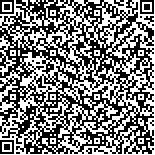中文摘要:甲玛铜多金属矿床是西藏藏中有色金属开发基地的重要矿床。文章重点研究了该矿床的成矿地质条件、找矿标志、 地球化学勘查模型、地球物理勘查模型、矿体空间结构等。研究表明:赋矿地层为林布宗组(K1l) 砂板岩、角岩和多底沟组(J3d)大理岩、灰岩,角岩控制了钼(铜)矿体的分布,角岩与大理岩之间的层间构造是矽卡岩型矿体的赋存部位。广泛发育的角岩构成良好的圈闭,使金矿岩浆热液在层间构造圈闭、岩性圈闭中成矿。矿区出露花岗斑岩、黑云母二长花岗斑岩、花岗闪长玢岩、石英闪长玢岩、闪长玢岩等9种侵入岩,与成矿有关的为高钾钙碱性系列的花岗斑岩、二长花岗斑岩类,它们被动地充填于构造作用形成的虚脱空间中。甲玛-卡军果推覆构造系的牛马塘复式背斜控制了矽卡岩型矿体和斑岩型矿体的产出。1∶1万土壤地球化学勘查模型显示:异常浓集中心的元素组合为Cu-Mo-Au-Ag-Bi-Sn,其中,Mo、Bi、Sn等高温元素为内环异常元素,As、Sb、Hg、Pb、Zn、Co、Ni是外围异常元素。Co、Ni异常代表的是一种原岩为碳泥质砂板岩的异常;As、Sb、Hg异常代表的是角岩中广泛分布的弥散性黄铁绢云岩化,代表斑岩成矿系统外围的蚀变异常。Cu、Mo、Au、Ag、Sn、Bi元素在剖面上呈“M”型分布型式。1∶1万地球物理勘查模型为:高精度磁测异常、视电阻率异常在剖面上显示为“W”分布型式,视极化率异常表现为波浪起伏的特征。斑岩成矿系统矿化强烈的区域显示为低磁异常(ΔT值为0~200 nT),接触带为中高磁异常(ΔT值为200~1 500 nT),环状的中高磁异常带构成了斑岩矿化体的接触带特征。角岩型矿体、矽卡岩型矿体和斑岩型矿体的分布区极化率在4%~10%之间,视电阻率在50~700 Ωm之间。除了物化探异常标志外,巨大的火烧皮和热蚀变、浅地表密集岩脉是最重要的找矿标志。基于以上研究成果的系统钻探工程(约14.5万米钻探工作量)证实甲玛铜多金属矿床是一个典型的斑岩型矿床。从矿体的剖面结构看,从围岩→赋存于角岩中的钼(铜、金、银)矿体→矽卡岩型铜钼铅锌(金银)矿体→斑岩钼铜(金银)矿体,甲玛铜多金属矿床构成一个完整的斑岩成矿系统,在斑岩中形成斑岩型钼(铜)矿石,角岩中形成细脉浸染状、网脉状钼铜矿石,矽卡岩中形成细脉-浸染状、块状铜钼、铅锌(铜)矿石。
Abstract:The Jiama copper polymetallic deposit in Tibet is a significant ore deposit serving as a nonferrous metal base in central Tibet. This paper deals emphatically with the ore bodies in such aspects as its metallogenic geological conditions, prospecting indicators, geochemical exploration model, geophysical exploration model and spatial framework. Studies show that the ore-controlling strata are sandy slate and hornfels of Linbuzong Formation (K1l) and marble and limestone of Duodigou Formation (J3d), and that hornfels controls the distribution of hornfels-type ore bodies, and inter-layer structure between hornfels and marble controls skarn-type ore bodies due to the good trap formed by the hornfels which caused good magmatic hydrothermal mineralization. There are nine types of exposed magmatic rocks, such as granite porphyry, biotite monzonite granite porphyry, granite diorite porphyrite, quartz diorite porphyry and diorite porphyryp. Granite of high-K calc-alkaline series is related to the passive filling of mineralization into the collapse space caused by the structure. The ore-forming structure is the Niumatang complex anticline in the center of the Jiama-Kajunguo nappe structure controlling the generation of skarn and porphyry type ore bodies. The geochemical exploration model at the scale of 1∶10 000 indicates that Cu-Mo-Au-Ag-Bi-Sn, and Mo are concentrated in the anomaly center, Bi and Sn as the high temperature elements exist in the internal circle and As, Sb, Hg, Pb, Zn, Co and Ni as the lower temperature elements are present in the external circle. Co and Ni anomalies suggest that the original rocks were carbonaceous and argillaceous sandy slate, As, Sb and Hg anomalies imply the wide distribution of pyrite in hornfels and represent the external alteration of porphyry metallogenic system. Cu, Mo, Au, Ag, Sn and Bi assume “M”-shaped distribution along the cross section. The geophysical exploration model at the scale of 1∶10 000 indicates that the high precision magnetic anomaly and apparent resistance anomaly assume “W”-shaped distribution along the cross section, whereas the apparent chargeability anomaly shows the wave shape. The areas with intense mineralization of the porphyry metallogenic system show low magnetic anomalies (ΔT values being 0~200 nT ) and the orbicular contact zone has intermediate-high magnetic anomalies (ΔT value being 200~1 500 nT) with the features of porphyry mineralization. The polarizability in the distributive areas of hornfels, skarn and porphyry type ore bodies is 4%~10%, and the apparent resistivity is 50~700 Ωm. The other significant prospecting indicators are huge limonite coverage and hydrothermal alteration, and concentrate rock bodtes at the surface, in addition to the indicators of geophysical and geochemical anomalies. On the basis of the above data, the systematic drilling to the depth of 145 000 m has confirmed the typical porphyry metallogenic system in the Jiama copper polymetallic deposit. The zoning of wall rock→hornfels type Mo-Cu(-Au-Ag)→skarn-type Cu-Mo-Pb-Zn(-Au-Ag)→porphyry Mo-Cu(-Au-Ag) along the section has constituted an integrated porphyry metallogenic system forming porphyry type Mo(-Cu) ore bodies in the porphyry, network Cu-Mo ore bodies in the hornfels and veinlet-disseminated and massive Cu-Mo and Pb-Zn(Cu) ore bodies in the skarn.
文章编号:
中图分类号:
文献标志码:
基金项目:本文得到中央公益性行业科研专项“西藏甲玛斑岩铜多金属矿科学基地研究”课题(编号:200911007-02)、国家973项目(编号:2011CB403103)、青藏专项(编号:1212010818089;1212010012005)及中金集团重点勘探项目“E0804”的共同资助
引用文本:
唐菊兴,邓世林,郑文宝,应立娟,汪雄武,钟康惠,秦志鹏,丁枫,黎枫佶,唐晓倩,钟裕峰,彭慧娟.2011.西藏墨竹工卡县甲玛铜多金属矿床勘查模型[J].矿床地质,30(2):179~196唐菊兴,邓世林,郑文宝,应立娟,汪雄武,钟康惠,秦志鹏,丁枫,黎枫佶,唐晓倩,钟裕峰,彭慧娟.2011.An exploration model for Jiama copper polymetallic deposit in Maizhokunggar County, Tibet[J].Mineral Deposits30(2):179~196
图/表

